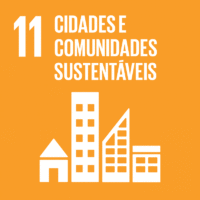Ciência_Iscte
Publicações
Descrição Detalhada da Publicação
Abstraction and empathy
Título Revista
A.MAG
Ano (publicação definitiva)
2021
Língua
Inglês
País
Portugal
Mais Informação
Web of Science®
Esta publicação não está indexada na Web of Science®
Scopus
Esta publicação não está indexada na Scopus
Google Scholar
Esta publicação não está indexada no Overton
Abstract/Resumo
In the year 2000, Manuel and Francisco Aires Mateus had just founded their own studio. After working several years with Gonçalo Byrne (one of the most noteworthy Lisbon architects of his generation) – and after, from a small room in his atelier, having completed some projects of their own (such as the Nafarros House in Sintra, the Assisted Living Residence of the Santa Casa da Misericórdia of Grândola or the Canteen of the University of Aveiro ) – Manuel and Francisco Aires Mateus had finally been working in their own space for two years, in a flat located in the Largo do Rato area of Lisbon. They had several projects coming up, some even of a considerable scale, such as the headquarters of the Order of Engineers, the Pedagogical Unit of the Sciences and Technologies Faculty of Coimbra University or the Rectory of the Nova University of Lisbon. But it was the commission of a simple project for a house in Alenquer, made a year earlier, that changed the character of Manuel and Francisco Aires Mateus's work in the twenty years that followed. If their previous work can be read as a direct consequence of Gonçalo Byrne's teachings – produced in a period they later described as "preambular" or "propaedeutic" – the work built after the elaboration of this house gained a distinctive role in the history of Portuguese architecture.
Agradecimentos/Acknowledgements
--
Palavras-chave
Arquitectura,Arquitectura Contemporânea,Aires Mateus
Registos de financiamentos
| Referência de financiamento | Entidade Financiadora |
|---|---|
| UIDB/03127/2020 | Fundação para a Ciência e a Tecnologia |
Contribuições para os Objetivos do Desenvolvimento Sustentável das Nações Unidas
Com o objetivo de aumentar a investigação direcionada para o cumprimento dos Objetivos do Desenvolvimento Sustentável para 2030 das Nações Unidas, é disponibilizada no Ciência_Iscte a possibilidade de associação, quando aplicável, dos artigos científicos aos Objetivos do Desenvolvimento Sustentável. Estes são os Objetivos do Desenvolvimento Sustentável identificados pelo(s) autor(es) para esta publicação. Para uma informação detalhada dos Objetivos do Desenvolvimento Sustentável, clique aqui.

 English
English


